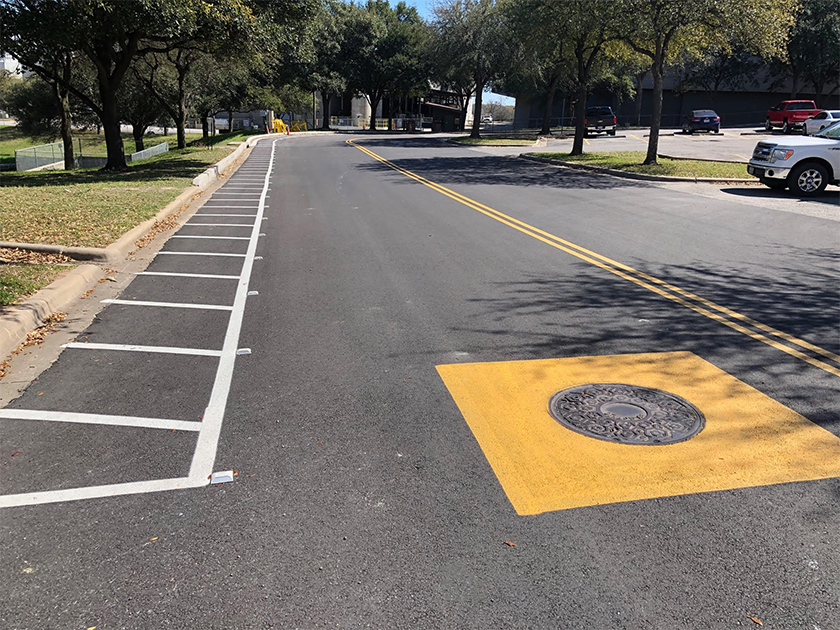

The Differences Between Sealcoating and Asphalt Paving
How Is Asphalt Paving Different From Asphalt Seal Coating?
In fundamental terms, asphalt paving is the process of providing a new asphalt surface. This can be new construction, but it can also refer to asphalt resurfacing through the installation of an overlay. Sealcoating is the application of a liquid material that will bond to an asphalt pavement to form a tough shell that helps to protect the pavement from premature deterioration or damage. One analogy would be to consider a dining table made of wood. If you do not paint or varnish the wood, the top will be more likely to develop stains, scratches, or cracks. Think of asphalt paving as the table’s wood and seal coating as the paint or varnish protecting the table as you review the following information.
1. Most businesses classify asphalt paving expenses as either an item of capital expenditure or asphalt repairs. The determination usually involves the extent of the work. For example, if they need asphalt resurfacing for an entire parking lot, their company policy may require that they capitalize on the expenditure, but if they only need overlays installed on two relatively small areas, they may consider them as asphalt repairs. However, they will typically classify the application of a sealant as preventive or routine maintenance.
2. Well-maintained asphalt pavement can last 20 years or more, and a good sealant is part of an effective maintenance plan. However, sealants typically do not last more than three or four years. You will need to have your asphalt contractor reapply the sealant periodically to give your pavement continuous protection.
3. Contractors can usually apply a sealant and reopen the area in less time than they can complete a resurfacing, reconstruction, or new installation project. This means that asphalt paving will cause more disruption to traffic and may inconvenience customers or tenants more.
4. Per square foot, a sealant application is the least expensive procedure, according to many paving contractors customers rely on for their pavement-related services. Pavement reconstruction is normally the most costly; resurfacing typically falls somewhere between the most and least expensive options.
5. When correctly installed, new asphalt pavement will be dark, smooth, and visually pleasing. Over time, the sun can fade its color as well as inflict damage on the pavement. Sealants help reduce damage, but they also restore the pavement’s original appearance.
Alpha Paving is one of the leading paving contractors Austin TX businesses count on for high-quality work, exemplary customer service, and professional project management. Our clients include homeowner associations, municipalities and counties, retailers, apartment complexes, property management firms, shopping malls, airports, health care facilities, religious institutions, and hotels. Our services include asphalt paving and overlays, asphalt repair, sealant applications, street maintenance, concrete repair and installation, road construction, parking lot striping and pavement markings, asphalt milling, parking lot maintenance, speed bump installation, and thermoplastic markings. To request a free quote, simply call our office at 512-677-9001 or complete the online form.



